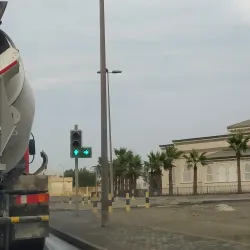Traffic in Tubli
In Tubli, Bahrain, the primary mode of transportation is overwhelmingly by car, with 100% of commuters relying on this method.
The city faces significant challenges with CO2 emissions and traffic inefficiency, highlighting areas for potential improvement.
Average Commute Times
The average commute time involves 30 minutes of driving and 10 minutes of walking, covering a distance of 18 km.
- Car - Commuters using cars spend an average of 30 minutes driving, with an additional 10 minutes of walking.
Traffic Breakdown
Traffic Data
Overall average travel
Average when primarily using Car
More Information
Seasonal Trends
Traffic tends to increase during the summer months due to higher temperatures, leading to more car usage.
Winter months see slightly reduced traffic as the cooler weather encourages walking.
Commuter Pain Points
High CO2 emissions and traffic inefficiency are major concerns for Tubli commuters.
Limited public transportation options force reliance on cars, increasing congestion.
Best Travel Times
Early mornings before 7 AM and late evenings after 8 PM are the best times to avoid heavy traffic.
Midday travel can also be less congested compared to peak rush hours.
Event Impacts
Public events and holidays can significantly impact traffic, often leading to road closures and increased congestion.
Planning travel around major events can help avoid delays.
Sustainability Efforts
The city is exploring initiatives to introduce more public transportation options to reduce car dependency.
Efforts to promote cycling and walking are being considered to lower CO2 emissions.
Ride-Sharing Impact
Ride-sharing services are slowly gaining popularity, offering an alternative to personal car use.
These services could help reduce the number of vehicles on the road, easing congestion.










